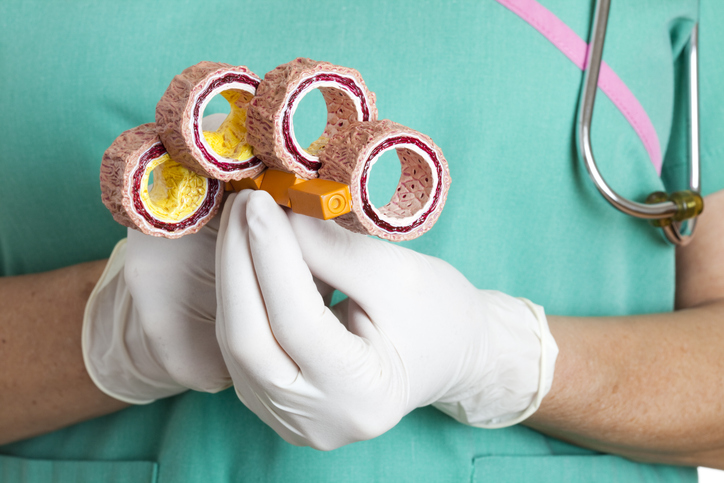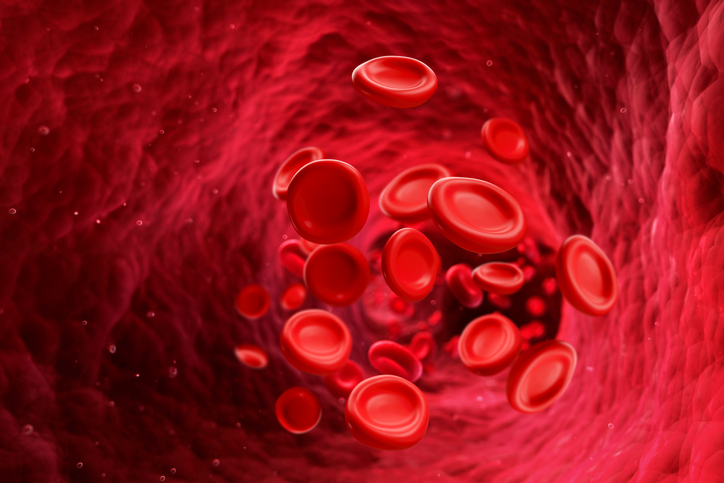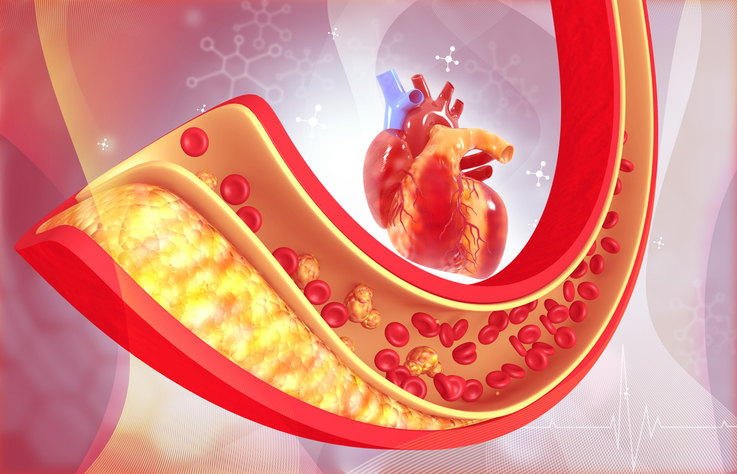CardioNerds at SCAI SHOCK 2022: The FLAME Trial
By CardioNerds - Last Updated: November 1, 2022In the FlowTriever for Acute Massive Pulmonary Embolism (FLAME) study, researchers aimed to assess treatment outcomes of patients diagnosed with high-risk (massive) pulmonary embolism.
In this video interview, CardioNerds correspondents Drs. Saahil Jumkhawala (Rutgers Medical School), and Nazli Okumus (Allegheny Health Network) spoke with the FLAME trial’s principal investigators, Drs. Mitchell Silver (OhioHealth Heart and Vascular), and James Horowitz (NYU Langone Health) to learn the details of this study, and how its findings can improve patient outcomes.
This interview was conducted as part of a collaboration between CardioNerds and SCAI SHOCK 2022, led by Dr. Julie Power, Dr. Dan Ambinder, and Dr. Amit Goyal with mentorship from Dr. Alex Truesdell.
Dr. Saahil Jumkhawala: Hi everyone. My name is Saahil Jumkhawala and I’m a third-year internal medicine resident at the Rutgers New Jersey Medical School Program and a proud CardioNerds Academy fellow. Thank you so much for tuning in today.
Dr. Nazli Okumus: Hello everyone and thank you so much for tuning in today. My name is Nazli Okumus. I’m a second-year general cardiology fellow at Allegheny Health Network in Pittsburgh and I serve as the CardioNerds ambassador in my program. On this episode, we are featuring the FLAME trial, FlowTriever for Acute Massive Pulmonary Embolism. It’s our pleasure to be joined by Dr. Mitchell Silver and Dr. Jim Horowitz who are the core principal investigators of this exciting study. This interview is part of a CardioNerds SCAI SHOCK 2022 collaboration with mentorship from Dr. Alex Truesdell.
Dr. Silver is an interventional cardiologist and vascular medicine specialist at Ohio Health and Vascular Physicians in Columbus, Ohio, specializing in managing the full spectrum of arterial, venous, and lymphatic diseases. He serves as the director of the Center for Critical Limb Care at Riverside Methodist Hospital and has authored over 200 peer reviewed manuscripts and book chapters with research interests in the areas of venous thrombosis, pulmonary embolism, currented stenting, and endovascular limb salvage.
Dr. Horowitz is a clinical assistant professor in the Department of Medicine at NYU Grossman School of Medicine where he also serves as assistant chief of service for the division of cardiology and assistant program director of the pulmonary disease and Critical Care Medicine Fellowship. Dr. Horowitz is actively engaged in research with interests including pulmonary embolism response teams, thromboembolic disease associated with COVID-19, and percutaneous management of DVTs and PEs.
Thank you both for taking the time to speak with us. I will start with the first question. Over the past couple of years there has been increasing interest in the management of PE with widespread use of percutaneous intervention, such as mechanical thrombectomy and catheter directed thrombosis in high intermediate and high-risk PE. Dr. Silver, can you tell us what led to a trial investigating FlowTriever where in patients with high-risk PE and what might it add over CDP and systemic thrombolytics in this patient group?
Dr. Mitchell Silver: Thank you for the question and I hate that it’s a good one so I can kind of give the background behind the spirit of the FLAME trial. So, I think all of us are quite humbled by the mortality that we see with high-risk PE, and we really haven’t impacted it in over 20 years. If you recall, the ICOPER study in 1999 found a 52% 90-day mortality in high-risk PE patients, which was quite high. And now when we fast forward to more contemporary series, it’s about a 40% rate of mortality at 90 days. So that’s really quite humbling. Then if you take into account the standard of care, which is systemic thrombolysis, if you consider the 2% intracranial hemorrhage rate and the 10 to 14% rate of major bleeding, it’s a big problem because that’s the standard of care.
So, Jim and I and other KOLs felt it was really incumbent on all of us to look at alternatives such as large-bore catheter aspiration. So essentially a lytic free strategy, such as a large-bore catheter aspiration system, that can really rapidly reverse the hemodynamic compromise scene in these high-risk PE patients, quickly improve gas exchange abnormalities, we think really may offer an evolution to the next step study together. That’s why a technology like FlowTriever really adds something. It’s a rapid reperfusion strategy without the risk of systemic license.
Dr. Nazli Okumus: Thank you very much. These are great points.
Dr. Saahil Jumkhawala: Thank you for sharing that Dr. Silver. Dr. Horowitz, would you be able to tell us some more about the design of the FLAME trial?
Dr. Jim Horowitz: Yeah. To kind of partner with what Mitch just said, I think there were two things that happened that were very interesting. One was in the first cohort of the flash data, the first 250 and change patients, there was about 10% of patients who were massive PE patients or high-risk patients. And basically, they all lived after FlowTriever and as Mitch just said, that’s not supposed to happen. The mortality is 30 to 50 to whatever percent depending on what study you look at. So that really piqued our interest when that first cohort was presented in I guess 2020, 2021. And that led to discussion with Mitch and then I talked about, and Mitch will never tell you this because he’s too humble, but the cool thing is that at his system at Ohio Health, you can roll into the ED with a massive PE and be worked up and treated like a STEMI and be in the lab in 20 minutes door to balloon time kind of thing, door to suction thrombectomy time, and have this kind of clot removed. That has not happened historically.
So, I think the combination of those two kind of ideas led to this thought of how can we follow-up this kind of bit of an idea from flash and figure out if there’s actually a signal there? Now we didn’t think that we had the power to randomize, so what we have is basically two parallel registries. And part of that is because one of the fun things about PE or funny things about PE is that there’s so many devices in the space that maybe not everybody in your group is savvy with each device. Maybe like its changing year to year or there’s new devices, there’s new this, maybe two or three all do blah, blah, blah. So basically, our thought was if we have sites that are very, very savvy, let them do a series of massive PEs and then another separate series do standard care, which is TPA or whatever you do, and then we’ll see what happens.
And lo and behold, my research career in the past was basically centered around sub massive PE, which is a just difficult, difficult space to work in because the mortality numbers make it that powering these studies is very difficult, but with massive PE, it’s so dangerous that we realize that we could do probably create some good data with a small number of patients in each arm, like sub 100 patients. And the thought was that I think Mitch would agree I think that the thought from everybody involved was like, “Let’s move the needle on the guidelines. That’s what we want to do.” So hopefully when we get data from this trial, we can see that there’s a massive difference, no pun intended. Sorry. Dad joke. And then maybe move the needle on moving some guidelines as well.
Dr. Nazli Okumus: Thank you Dr. Horowitz. These are really interesting points. And another question is, one of the exclusion criteria of this study was history of pulmonary hypertension with pulmonary systolic pressure greater than 70. Can you tell us more about the effects of underlying chronic pulmonary hypertension and how the cutoff of 70 was determined?
Dr. Jim Horowitz: I will tell you that it’s interesting. We started our first PERT and now it’s 2012. It was 10 years ago. One of my mentors, Evelyn Horn, who runs the PH program at Cornell said, “Listen, we will support you, but just make sure that you don’t kind of muck around with the chronic patients because they can be unpredictable.” So basically, the point is that if somebody’s PH on echo or cath is greater than say 60 or 70, the idea is that there’s some chronicity there. This is not an acute event. Your RV is a thin-walled structure that generally operates at one fifth of the pressure systemically. And so, if your PA pressure is that high, there’s something else going on. I know the classic [inaudible 00:08:57] trial says that 4% of patients have CTEP, but I wonder if you’d repeat this.
Like now you sound very different because we see a lot of patients who look like they have chronicity either by the PA pressure, the size of the main PA on CT, RV3 wall thickening, X, Y, and Z. We wanted to make it as pure as possible because the hemodynamics, as you guys know as cardiologists, the person who is failing acutely with RV failure is very different than the person who has acute on chronic, in the sense that someone may have a PA pressure of 100 and then as they’re failing, it trickles down to 90, 80, 70, 50, 40, 30 20. We just thought it was a very different disease and we thought it would kind of cause some possible conflicts with the purity of the data. Mitch, do you agree? Is that?
Dr. Mitchell Silver: Jim, you’re spot on. So, we all know that if you acutely load the right ventricle, it’s not going to generate a pressure of 70. So that in of itself tells us that there is some chronicity to what’s been happening in the pulmonary vasculature and those patients have a completely different natural history. So, we wanted to exclude that. But importantly on the trial design, it’s very real world, which I like very much. The issue with RCTs is there’s a lot of inclusion and exclusion criteria and patients are almost cherry picked where in FLAME, particularly in the non-FlowTriever arm, doctors are able to do whatever non-FlowTriever therapy they want. Catheter directed lysis, systemic lysis. So, it’s very real world and I think it’ll be a very rich source of data to, like Jim said, hopefully be the thing to maybe support changing and guidelines. The proof will be in the pudding, but we’ll see.
Dr. Saahil Jumkhawala: Thank you both for that insight and we look forward to seeing the results. Dr. Silver, so our next question, utilization of ECPR has been more emphasized in the recent years, along with the question of timing and necessity for ECMO cannulation in patients with high-risk PE. Are you anticipating finding more answers with this study regarding timing and necessity of ECMO in high-risk PE treated with mechanical thrombectomy?
Dr. Mitchell Silver: Thanks, Saahil. So, there’s definitely a role for advanced mechanical support in patients with high risk, in particular ECMO. In fact, I think most high volume centers that are treating high risk PE patients are very savvy at it and they’re very keen on recognizing the patient that starts that death spiral when they have obstructive shock with PE and what we’ve learned, it’s a good thing to intervene early with advanced support devices like ECMO because what it affords, then you can do the procedure in a much more supported fashion obviously. So, I think most high-volume centers that are doing high risk PE are commonly putting patients on advanced support, again, because once they start that death spiral, it’s hard to reverse it.
And those are judgment calls at the bedside. We can talk a little bit about what makes us put people in advanced support, but it’s an important thing. So yes, I think FLAME should highlight and help us understand the timing of Linda Institute Advanced Support and that’s something that I think will tease out from the study. But yes. It’s an important modality to be able to do that in the high-risk PE patient.
Dr. Nazli Okumus: Thank you Dr. Silver. FLASH registry showed impressive on table hemodynamic improvements as well as encouraging long-term results of the six months in high intermediate risk PE treated with mechanical thrombectomy. What are the expected results and outcomes of this trial in high-risk PE?
Dr. Jim Horowitz: Let me make one comment and then kick it back to Mitch. I think that, again, not to toot his horn too much, but Mitch was the person who first turned me onto this. The idea that your ECMO team is your cath team is your PE team is paramount. Right? Your ECMO in PE is your balloon pump/impella PCI. This is part of the disease state. It is not a complication. It is part of the disease. And if you were at a center that can do that, it will just help you grow your team and grow your service.
Dr. Mitchell Silver: It’s a great analogy, Jim. I completely agree. It’s like doing a high PCI without a left and tripler cyst device. We know that that improves outcomes, and it just makes sense. Once that patient starts the death spiral, put them on support. Cath labs that are savvy at it can do it in the ER, they can do it in the cath suite. We use ultrasound and micropuncture technique. It’s a safe thing to do. It really is.
Dr. Saahil Jumkhawala: Thank you. And additional question that we had is regarding the tremendous number of variations in management of high-risk PE such as systemic thrombolysis, surgical thrombectomy, mechanical thrombectomy, and ECMO cannulation with the anticoagulation approach. The lack of solid evidence-based approach and clinical challenges in the management of intermediate to high-risk PE led to the concept of the PE response team. How do you think that the FLAME trial will affect the choice of treatment and what should be some of the next steps moving forward? Dr. Horowitz, if you’d like to start.
Dr. Jim Horowitz: Yeah. Sure. Usually in my PE slide deck, which I use religiously, I have this slide that says, “When I got into PE work 10 years ago, the needle had not moved since 1960.” So TPA came out, heparin came out, and then my slide is basically heparin and hope for the best, filter and forget, and TPA too late. So that’s where we were for a long, long time. And I’ll tell you that when we have this conversation with PERTs all over the country all the time, everyone says, “Well, maybe I don’t have ECO, maybe I don’t have this.” And that’s okay because TPA works well because the first problem is one, early diagnosis. We’ve solved that with CT for the past 30 years. The second problem is early anticoagulation. Scott Cameron’s group from Cleveland Clinic showed that we’re terrible at it and then his initiation of a PERT improved that dramatically.
And then there’s data from the mid-2000s that shows that TPA used for massive PE actually went down between ’99 and 2010 despite obviously knowing that it saves lives as Jeff Klein’s group has showed as well because people are scared of, as Mitch said, that two or 3% of cerebral hemorrhage. So, people are not doing the basics, the fundamentals. It’s like playing a sport. On some level it’s like the fundamentals. Early anticoagulation, Lovenox instead of heparin because we know that people don’t get their PTT therapeutic. Half the time they’re not therapeutic after 12 hours. We know that they’re not giving early TP when people are actually coding and dying and massive. So that’s the lowest run. And I think PERT has helped with that dramatically by spreading the gospel across the country. We talked about the PERT consortium about this idea of, and at our recent cardiac critical care symposium at NYU about how do we find enough sites to staff all these new randomized controlled trials for PE?
And the answer is we have PERTs. There’s hundreds of PERTs across the country. These are sites that can now help just by being active, by raising awareness that can help by randomizing, they can drive the whole PE land forward in a way that we haven’t done in 60 years. And that’s dramatic. For the rest of the stuff, we also know that historically cardiac surgery for PE was thought to be no man’s land. Basically, you went to the OR, and you die. And that data from San Goldhaber 20 years ago, there’s newer data basically that shows that that was probably because people weren’t getting into the surgeon’s hands until they were half dead. Think about the idea of a patient coming into the ED, going to a medicine intern, going to medicine resident, medicine attending, surgical consult, surgical chief, surgeon themselves, CT surgery, that takes days, but with the modern PERT scenario, you can get a patient to the OR in a few hours.
Maybe not every day. Maybe not every day [inaudible 00:18:08] in your site, but it can happen. And so, I think we’ve seen as a community that that is much less morbid than we thought. And if you talk to CT surgeons, they’ll actually tell you that doing an embolectomy is way simpler than even a cabbage. It’s basically one incision and just start pulling stuff out. So, I think if you can get them the right patients in the right timeframe, then you can make life or death difference. And I’ll leave the rest of the stuff to Mitch.
Dr. Mitchell Silver: Those are great comments, Jim, and I would just look at it in a different way, but very similarly philosophically I think, and in the area of my research the last couple few years is, the care pathway for Venous Disease in general, be it DVT or pulmonary embolus, needs fixed. Venous Disease has been an orphan for years. People just don’t understand it. And so, to Jim’s point, the care pathway right now is broken, it’s chaotic, the approach is very fragmented, its inconsistent, depending which ER doctor sees the patient, et cetera. But to his point, yes. Rapid diagnosis, getting the results to the correct doctor in time who then activates a team really will improve outcomes. And we’re seeing that. We really are. So, the whole care pathway continuum needs fixed in Venous Disease in general. And the PERT consortium’s really done a fantastic job with that. They really have.
Dr. Jim Horowitz: And the percutaneous procedures have just exploded in the past decade.
Dr. Saahil Jumkhawala: Thank you so much for sharing how this multidisciplinary approach has helped the field move forward. Dr. Silver and Dr. Horowitz, we can’t thank you enough for your time and for your expertise today. We are very excited to see the outcomes of this trial published as many people are also anxiously waiting for the data to be available. Thank you so much for joining us today and take care.







 © 2025 Mashup Media, LLC, a Formedics Property. All Rights Reserved.
© 2025 Mashup Media, LLC, a Formedics Property. All Rights Reserved.